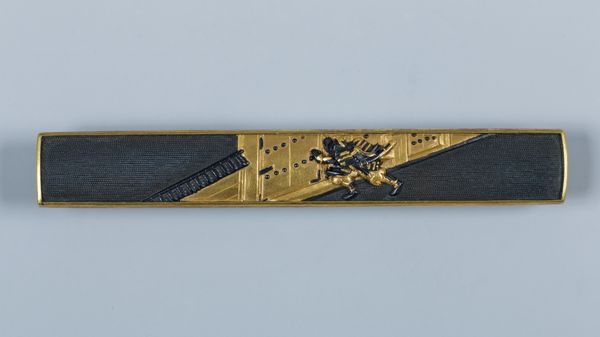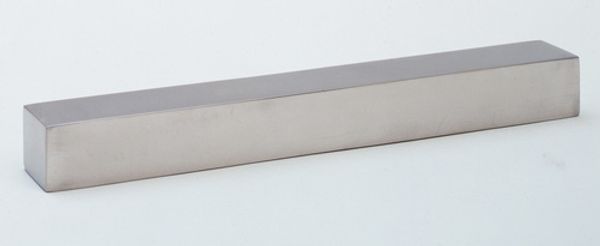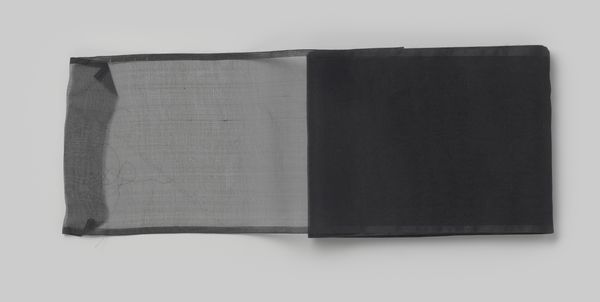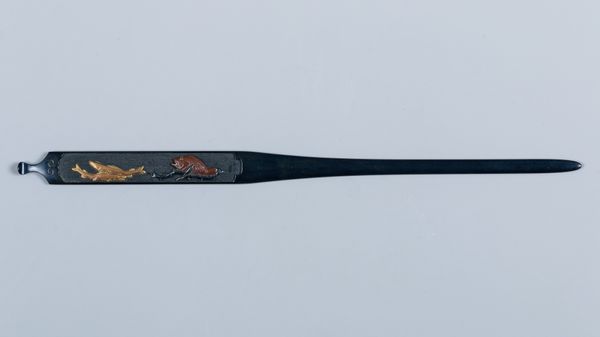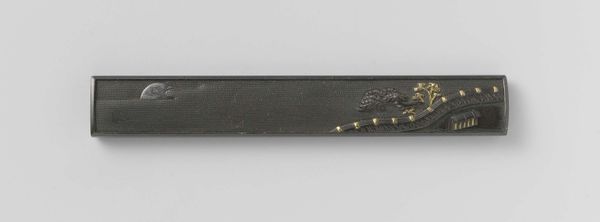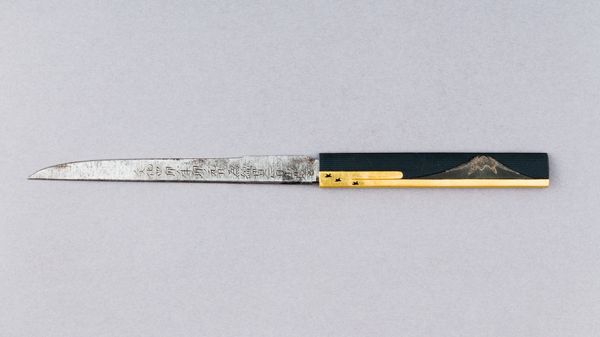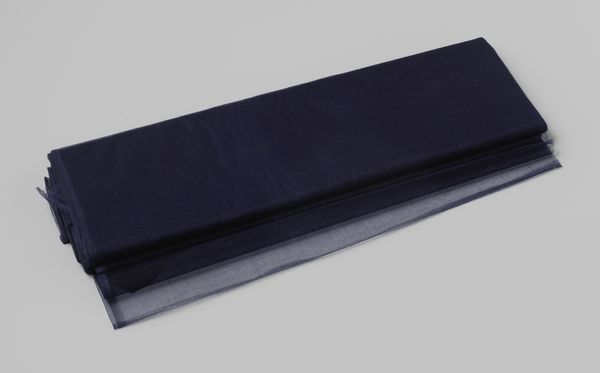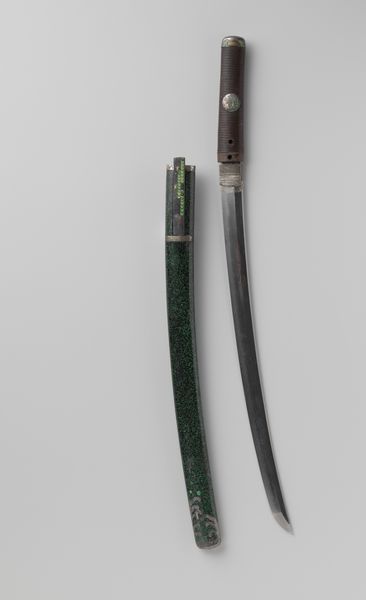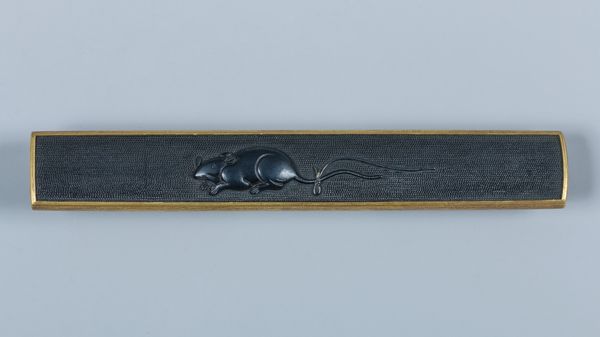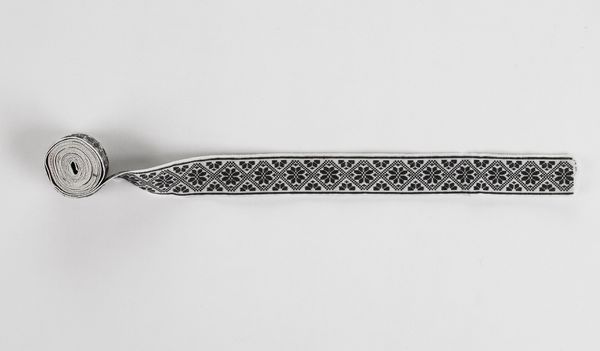
Set of Sword Fittings (Mitokoromono) with Two Additional Knife Handles (Kozuka) and a Pair of Grip Ornaments (Menuki) 1725 - 1775
0:00
0:00
ornament, metal, gold
#
ornament
#
metal
#
asian-art
#
gold
#
japan
#
armor
#
decorative-art
#
sword
Dimensions: knife handles (kozuka) (45.24.13, .33): L. of each 3 13/16 in. (9.7 cm); W. of each 9/16 in. (1.4 cm); grip ornaments (menuki) (45.24.48a, b): L. of each 1 1/2 in. (3.8 cm); set of sword fittings (mitokoromono) (45.24.63a–d): L. of hair dressing tool (kogai) (a) 8 5/16 in. (21.1 cm); L. of grip ornament (menuki) (b) 1 13/16 in. (4.6 cm); L. of grip ornament (menuki) (c) 1 3/8 in. (3.5 cm); L. of knife handle (kozuka) (d) 3 13/16 in. (9.7 cm)
Copyright: Public Domain
Curator: Welcome. Here we have an extraordinary set of sword fittings – what the Japanese refer to as mitokoromono – crafted by Gotō Mitsutaka, also known as Enjō. They are dated to the mid-18th century, specifically between 1725 and 1775. Editor: Striking. It's a display of intense power rendered with exquisite, almost unsettling, refinement. There's this incredible textural contrast. The gleaming gold sections against the dark metal gives the immediate impression of restraint power and also wealth, but there’s also something quite brutal here. Curator: Precisely. Sword fittings in Japanese culture go far beyond mere utility. Consider the Edo period context. The ruling Tokugawa Shogunate maintained a rigid social hierarchy. Swords became potent symbols of status, especially for the samurai class, dictating what they can and cannot wear to reinforce rigid social constraints. The intricate metalwork, often featuring motifs symbolic of power, longevity, or even personal virtues, demonstrated not just wealth, but a sophisticated understanding of cultural symbolism. Editor: So, in essence, these ornaments transcend their decorative function, evolving into assertive statements of cultural power and elite identity? But what about the figures who could not own them? This elevation, therefore, serves as a stark reminder of societal divisions. I wonder, was there any popular, underground culture where there were "fake" models created as an artistic rebellion of the have-nots? Curator: While exact counterfeits are difficult to document, it's plausible that less affluent individuals might have acquired or fashioned more humble versions, perhaps employing alternative materials or simpler designs, hinting at that status without overtly breaching social boundaries. These would likely exist outside of documented collections. Also consider the artisans themselves. What socio-economic restrictions were in place for artisans to create such intricate sets for the elite class? Were they recognized, or mere names? Editor: That brings into play all kinds of interesting discussions on authorship, labor, and the politics of artistic production. Looking again at the details of this knife, with its meticulous detailing and expensive materials, I am wondering about gender, race, sexuality? Curator: While gender is difficult to pin down when considering a metal set, perhaps looking at the ownership and artisan lineage would bring some elements into the forefront. But, I agree, it's crucial that we keep such contemporary perspectives alive to question historical documentation. Editor: Thank you. Considering all the historical and cultural considerations at play gives new light to these mitokoromono. Curator: Indeed. There's always more to unpack and re-contextualize through an interdisciplinary perspective.
Comments
No comments
Be the first to comment and join the conversation on the ultimate creative platform.
